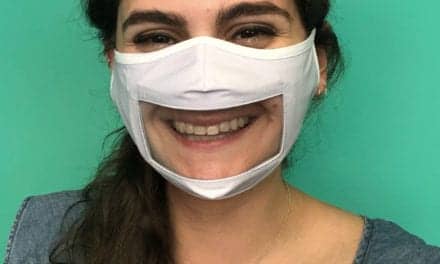With life, comes noise. From the chorus of weed whackers and lawn mowers in the summer months, to snowblowers and plows in the winter, these background noises form the soundtrack to our daily routines. Though it may be easy to tune out the constant screech of a subway train or the incessant honking of car horns, particularly if you become inured to the daily cacophony, at a certain sustained level, noise can potentially damage the sensitive structures within the ear.
According to the National Institutes of Health (NIH), a 2011-12 Centers for Disease Control and Prevention (CDC) study found that at least 6% and as many as 24% of adults under 70 may have some form of hearing loss related to loud noise exposure. Noise-induced hearing loss (NIHL) may be caused by a one-time exposure to a loud noise, such as an explosion, or a more gradual loss that occurs over time, such as working in a factory with large machinery, at a level that exceeds 85 dBA, says NIH. Examples of high-risk recreational activities that potentially cause hearing loss include target shooting, loud music, and riding motorcycles.
Eventually, hearing loss may present itself as an increasing difficulty in distinguishing different sounds or noises that seem muffled or distant. In some cases, the ringing, buzzing, or roaring in the ears associated with tinnitus may also occur.
So, what can you do to protect your ears from potentially harmful noise while still participating in these activities?
Garry G. Gordon, MS, a Colorado-based audiologist and CEO of E.A.R., Inc, a company that specializes in custom hearing protection for industrial, sporting, and law enforcement use, has made it his life’s work to educate others about the importance of hearing loss prevention versus simply fixing a loss. Gordon believes that sports aficionados, some of whom already have hearing loss, will be motivated to invest in prevention tools.
“The opportunity is there,” he’s quoted as saying in a recent Hearing Review article. “These sports of motorcycling, car racing, trap skeets, and sporting clays are all expensive hobbies. These people have money and are not concerned about how they’ll pay for this—and they need hearing protection and hearing help. Most will pay right away.”
Though some people may easily drop $500-$1,000 for a pair of electronic earplugs, Gordon says, they may balk at paying $4,000-$6,000 upfront for hearing aids. For those people, financing the cost with an easy, monthly payment plan like Ally Lending may be the ideal solution to correcting their hearing issue.
A good rule of thumb is that hearing protection should be used in an environment where you have difficulty hearing a normal tone of voice from 3 feet away, according to a fact sheet provided by Creighton University. The university recommends earplugs for low-frequency noise, which can reduce sound 15-30 dB by blocking the ear canal with an airtight seal. Earmuffs, on the other hand, are recommended for high-frequency sound, and fit over the entire outer ear to help block noise. Using both earplugs and earmuffs can provide 10-15 dB more protection than when used alone, and are particularly recommended for activities involving firearms. Although the best way to prevent NIHL is to distance yourself from the sound causing the noise, that’s not always possible. If you know, in advance, you will be in a noisy environment, utilizing hearing protection is a good way to cut down on exposure. If you think you have experienced hearing loss already, though, making an appointment with an audiologist who can provide a hearing test can help you treat the issue before it gets worse. Even better, utilizing a financing plan like Ally Lending can make the cost of treatment a lot easier to manage.
Stefani Kim is associate editor of The Hearing Review. She wrote this article for the sponsored Ally Lending enewsletter.





